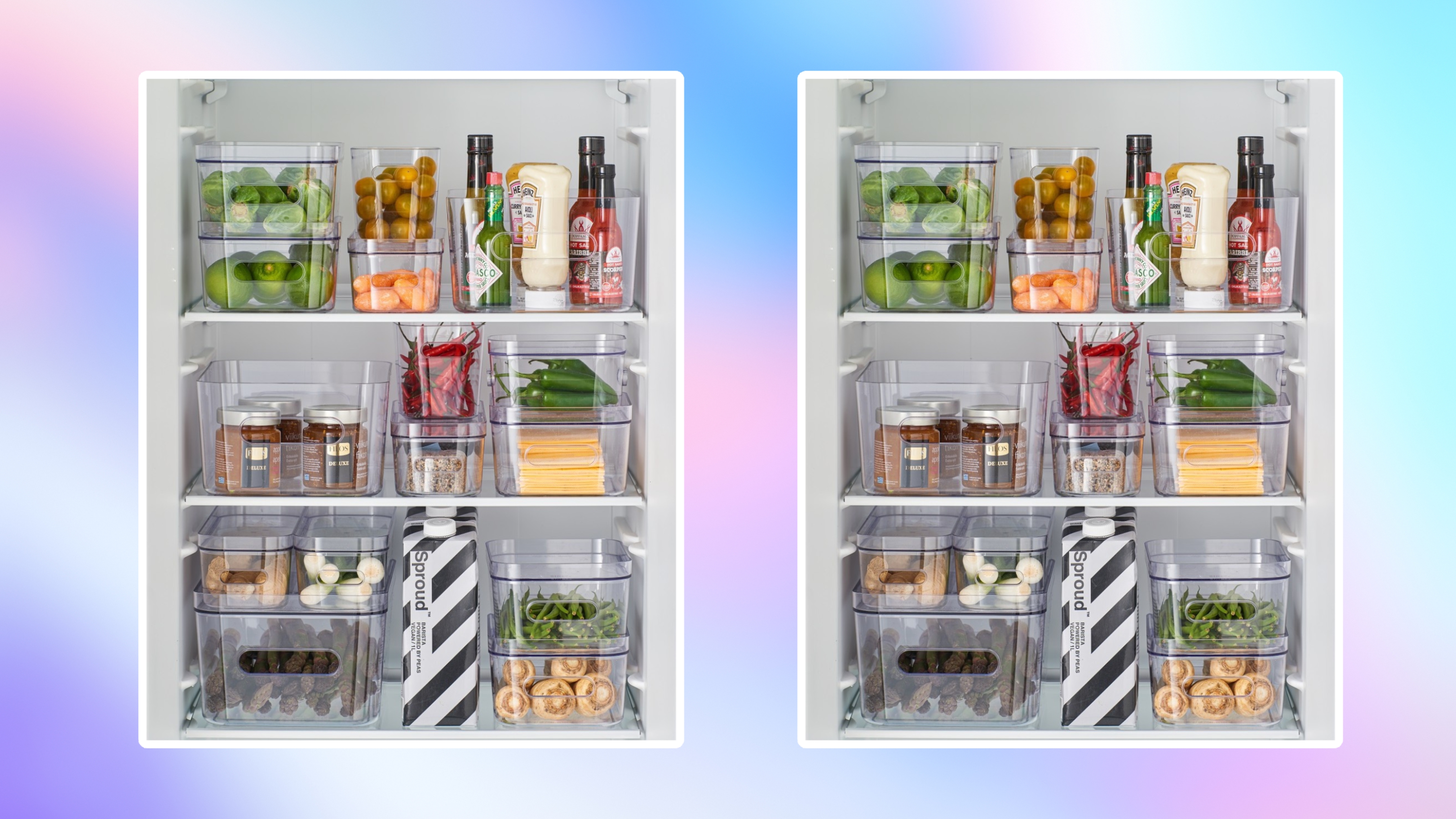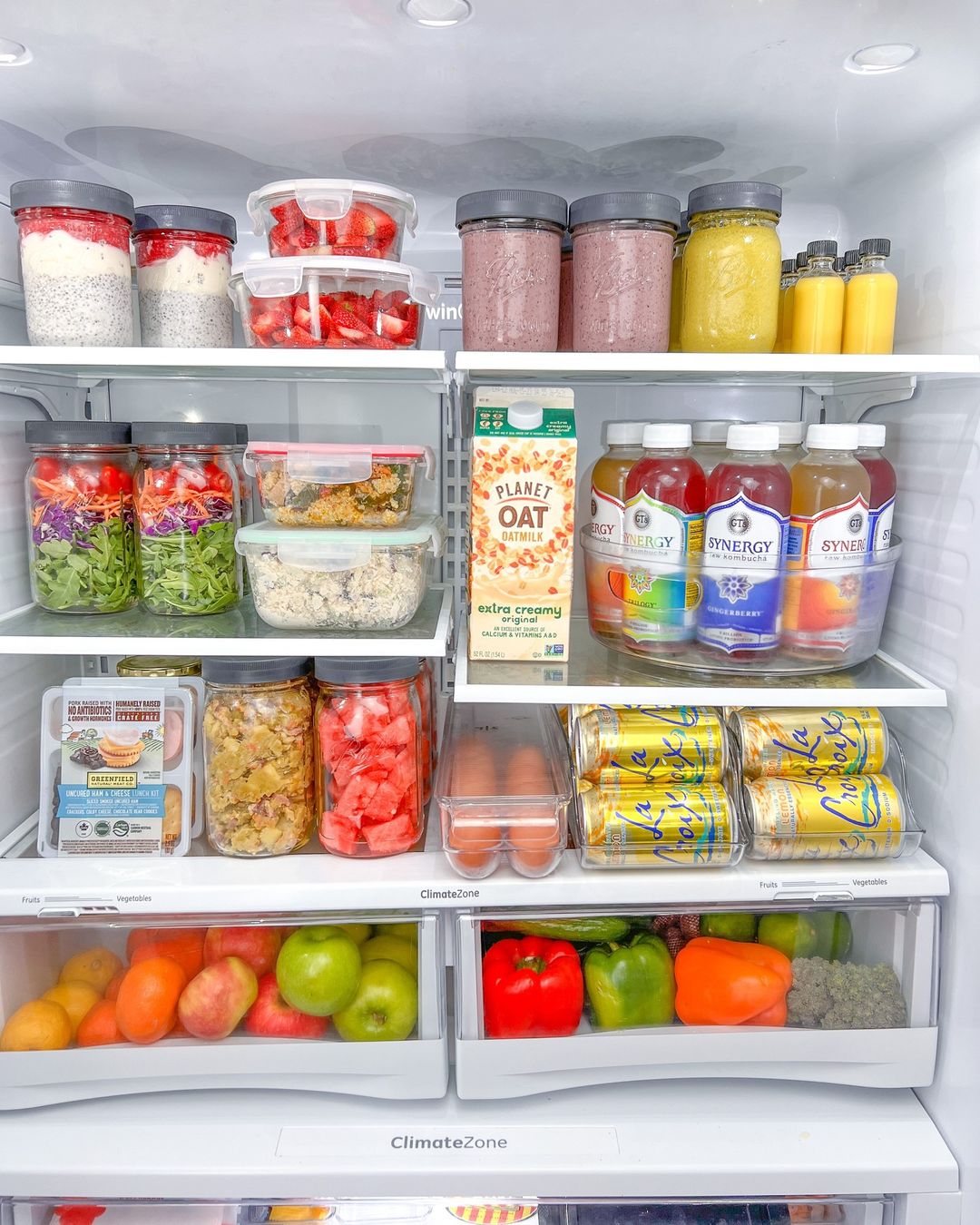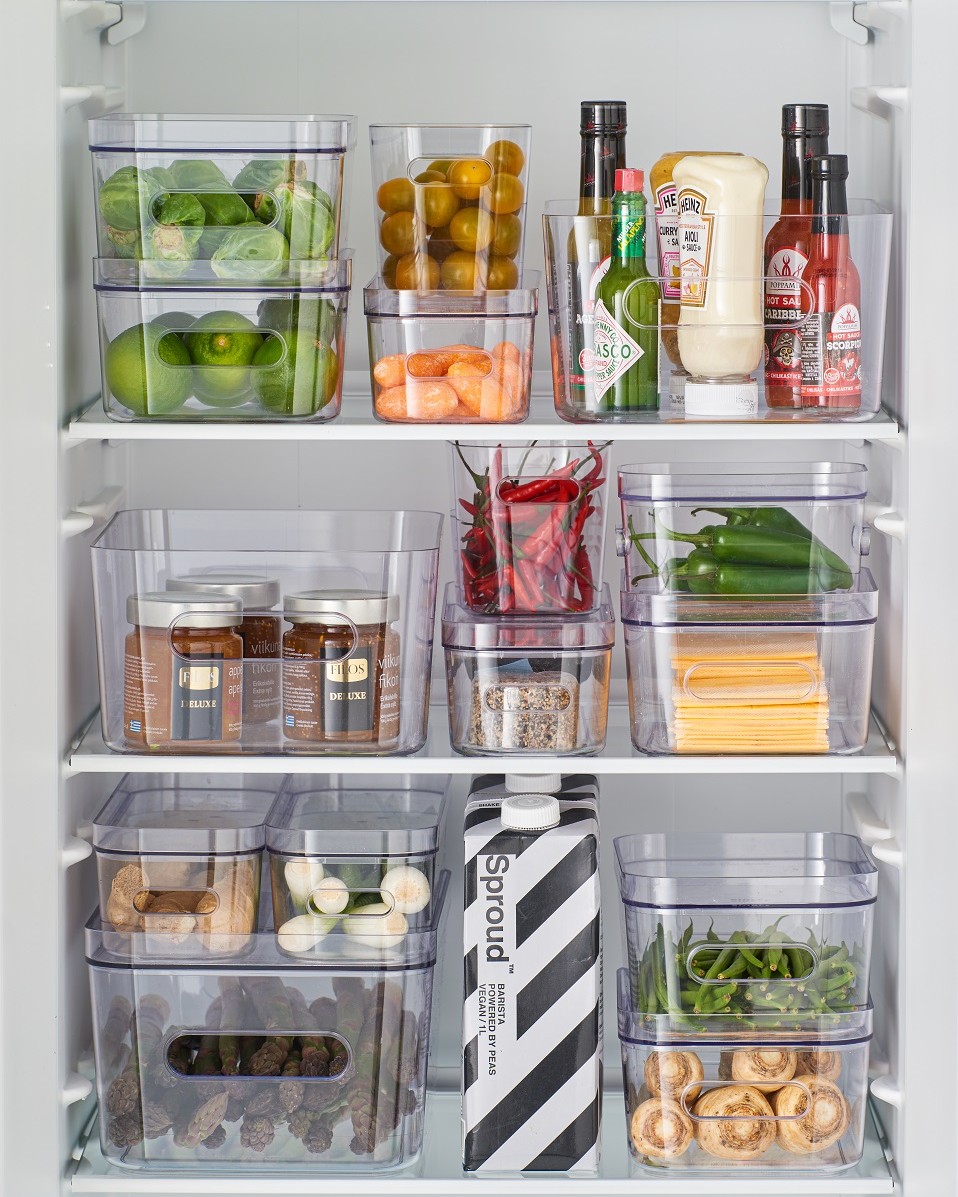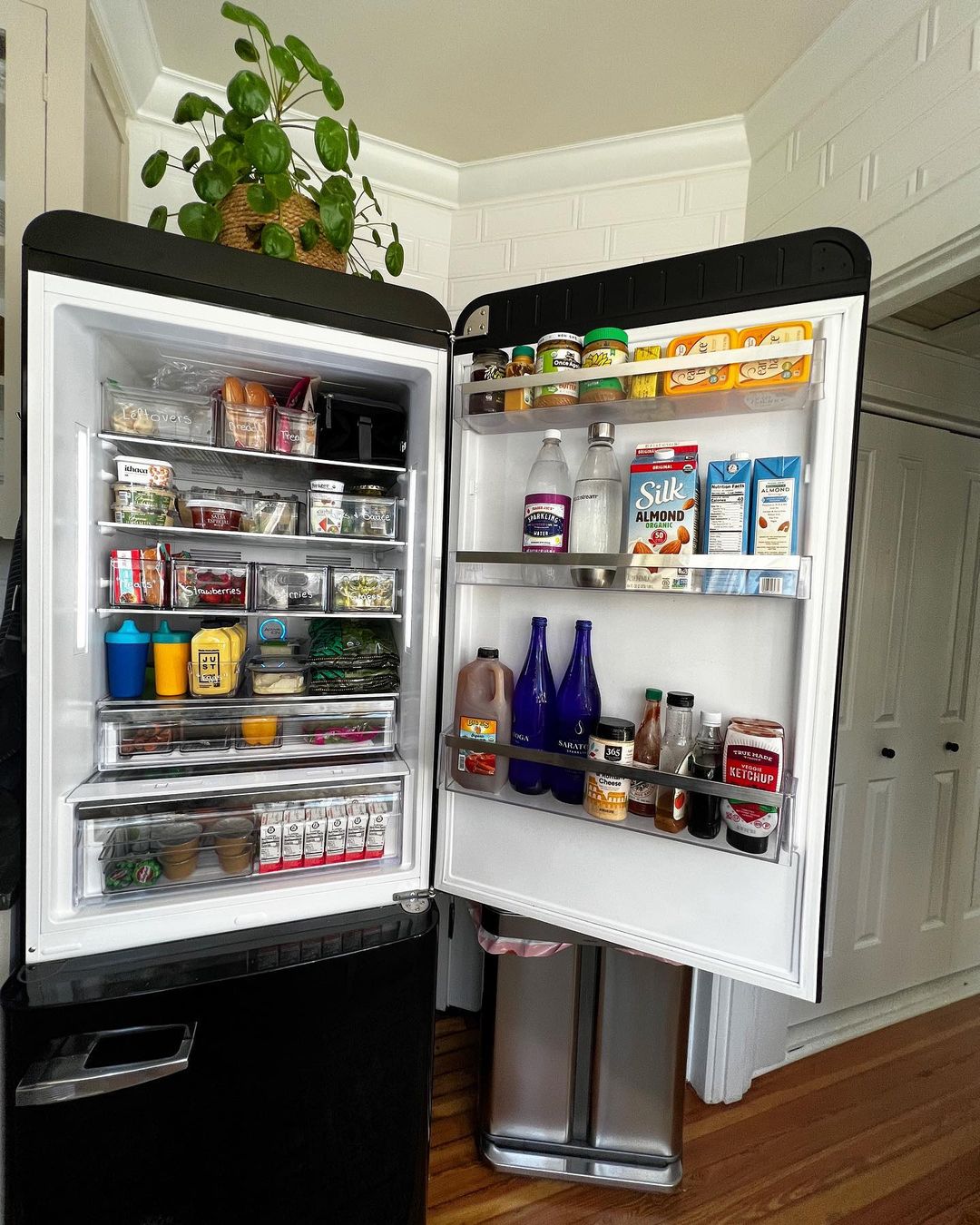
So you just bought a cute AF mini fridge. While they're so compact it can be seriously stressful trying to organize the damn thing. A fridge can do more than serve as a place to keep your food fresh. It can also function as an organized system that allows you to make the most of your shopping list.
Many smaller spaces, such as apartments, offices, or dorm rooms utilize mini-fridges as a way to free up kitchen space. With such limited space, it’s even more important that smaller fridges are kept organized.
Thankfully, there are plenty of creative and design-friendly ideas to keep everything in its place, leaving you more time to cook the meals you love and saving you the hassle of struggling to maintain a shopping list. Here are 7 ways to keep your fridge space organized.
1) Use Space-Saving Storage Containers

There are plenty of storage containers on the market but keep in mind that many of them are designed to fit snugly in a standard-sized fridge. By investing in storage containers meant for smaller spaces or mini-fridges, you can keep foodstuffs stored in a better way.
Take measurements of the space between each shelf to find the right height options that maximize the vertical space on shelves. In your search for the best storage containers, consider the ones that claim to keep your vegetables and fruits last longer. Any storage containers that prevent leaks can also help keep your space clean and your foods from being contaminated.
2) When In Doubt, Use Dividers
For some small fridges, dividing items up into containers often won’t help with achieving a more streamless layout. Instead of creating less space by using containers, considering utilizing dividers.
Dividers will help create a more compartmentalized approach without sacrificing space. Many dividers are customizable and adjustable, preventing items from shifting and allowing you to keep items grouped together for better visibility.
3) Avoid Aesthetic Traps

With so many storage container choices on the market, it could be a mistake to look for the wrong details when searching for the right type.
Rather than purchasing a container with a trendy look or one that is your favorite color, instead invest in one that functions the way you need, including finding containers that are clear (for better visibility) or the right height and width for your fridge.
By instead purchasing containers that provide freshness and visibility, you can find pieces that fit both your personal style and your daily needs.
4) Label Everything
Have you ever found yourself questioning the expiration date of an item in your fridge, or forgotten the date you stored your leftovers?
Then learning to label might be just the right tool you need to minimize food waste in your home. Especially important for keeping more room in a small fridge, labeling allows you to easily identify your foodstuffs.
5) Arrange Items by Type

Arranging items by type or category makes everything easier to locate, keeping you from making mistakes by accidentally purchasing the same thing twice.
A logical arrangement, such as placing dairy items together or fruits together, will allow you to move easier within your fridge, keeping you better organized for longer.
6) Become a “meal prepper”
Picture this: You open your fridge in the morning and know exactly what you’re eating for the day. Meal prepping has gained tons of popularity with the productive-obsessed and fit communities.
Instead of stuffing your food in your fridge when you get back from grocery shopping, meal prepping requires that you prepare your meals ahead of time, typically in their own storage containers, in order to make the most of your groceries.
Even on your busiest days, pre-washed fruits and veggies can save you the temptation for take-out (or hassle of cooking).
7) First In, First Out
An organizational method used in restaurants and grocery stores, the “first in, first out” method consists of rotating the perishable products in your fridge so that you’re always opting to grab the product that expires first.
A great way to be sure you cycle through products (such as your favorite oat milk) before opening a new one, this process ensures an easier flow so that you can better follow food safety guidelines when organizing your small fridge.
By labeling your prepared dinners, you can also reduce the amount of wasted food you use for meal prepping.
What items should I store in the fridge?
Your fridge is a great place to store many perishable items, like meats, dairy products, fruits and vegetables. At all times, be sure to follow food safety practices in understanding what needs to be frozen, refrigerated, or can be stored in a room temperature cabinet.
What can I leave out of the fridge?
Some items do not require refrigeration. Items, such as many whole fruits, unopened cans, bread, and potatoes, can be stored at room temperature. Many products will likely be labeled with that information. Always refer to product labels or consult food safety guidelines for specific recommendations.







